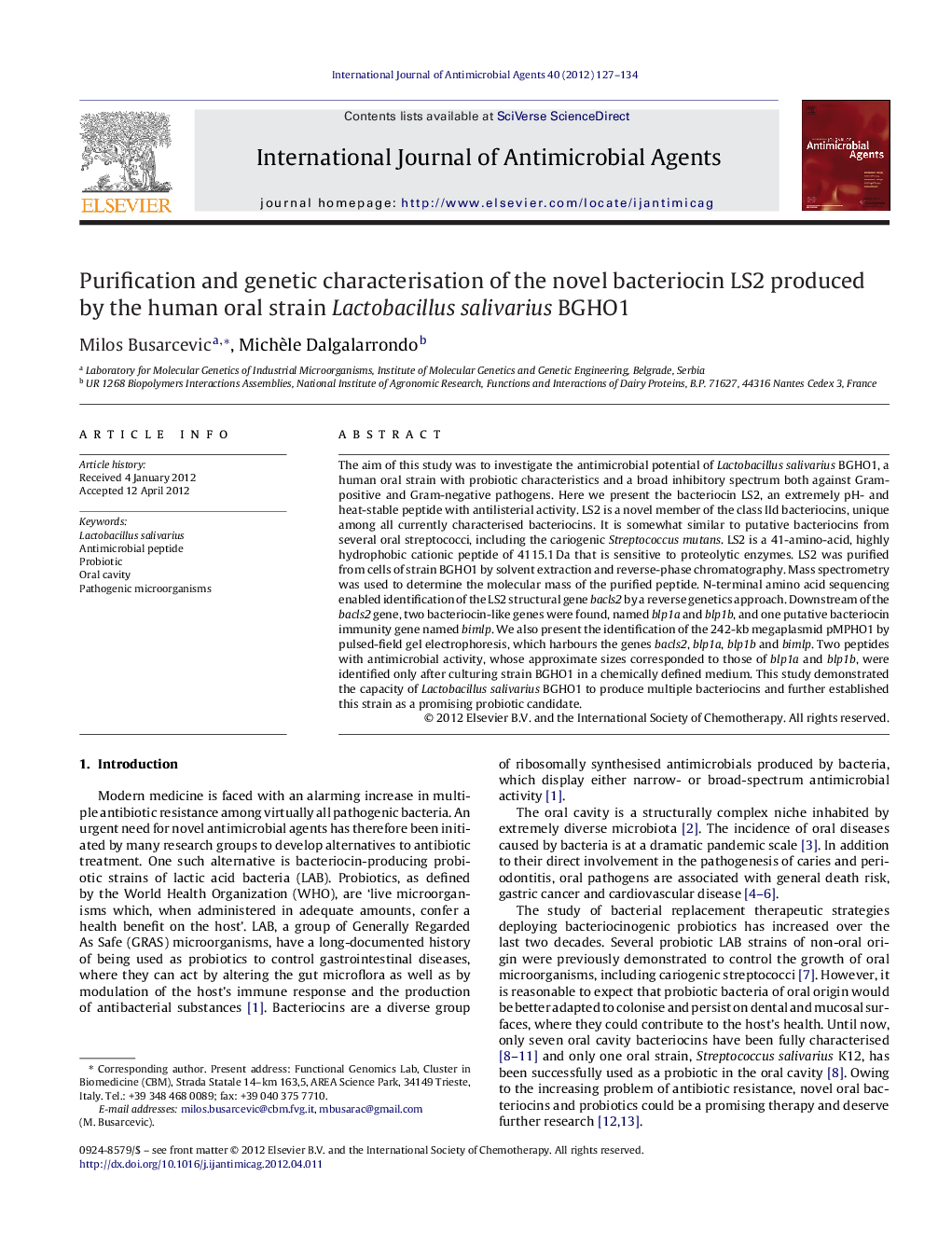| Article ID | Journal | Published Year | Pages | File Type |
|---|---|---|---|---|
| 3359261 | International Journal of Antimicrobial Agents | 2012 | 8 Pages |
The aim of this study was to investigate the antimicrobial potential of Lactobacillus salivarius BGHO1, a human oral strain with probiotic characteristics and a broad inhibitory spectrum both against Gram-positive and Gram-negative pathogens. Here we present the bacteriocin LS2, an extremely pH- and heat-stable peptide with antilisterial activity. LS2 is a novel member of the class IId bacteriocins, unique among all currently characterised bacteriocins. It is somewhat similar to putative bacteriocins from several oral streptococci, including the cariogenic Streptococcus mutans. LS2 is a 41-amino-acid, highly hydrophobic cationic peptide of 4115.1 Da that is sensitive to proteolytic enzymes. LS2 was purified from cells of strain BGHO1 by solvent extraction and reverse-phase chromatography. Mass spectrometry was used to determine the molecular mass of the purified peptide. N-terminal amino acid sequencing enabled identification of the LS2 structural gene bacls2 by a reverse genetics approach. Downstream of the bacls2 gene, two bacteriocin-like genes were found, named blp1a and blp1b, and one putative bacteriocin immunity gene named bimlp. We also present the identification of the 242-kb megaplasmid pMPHO1 by pulsed-field gel electrophoresis, which harbours the genes bacls2, blp1a, blp1b and bimlp. Two peptides with antimicrobial activity, whose approximate sizes corresponded to those of blp1a and blp1b, were identified only after culturing strain BGHO1 in a chemically defined medium. This study demonstrated the capacity of Lactobacillus salivarius BGHO1 to produce multiple bacteriocins and further established this strain as a promising probiotic candidate.
